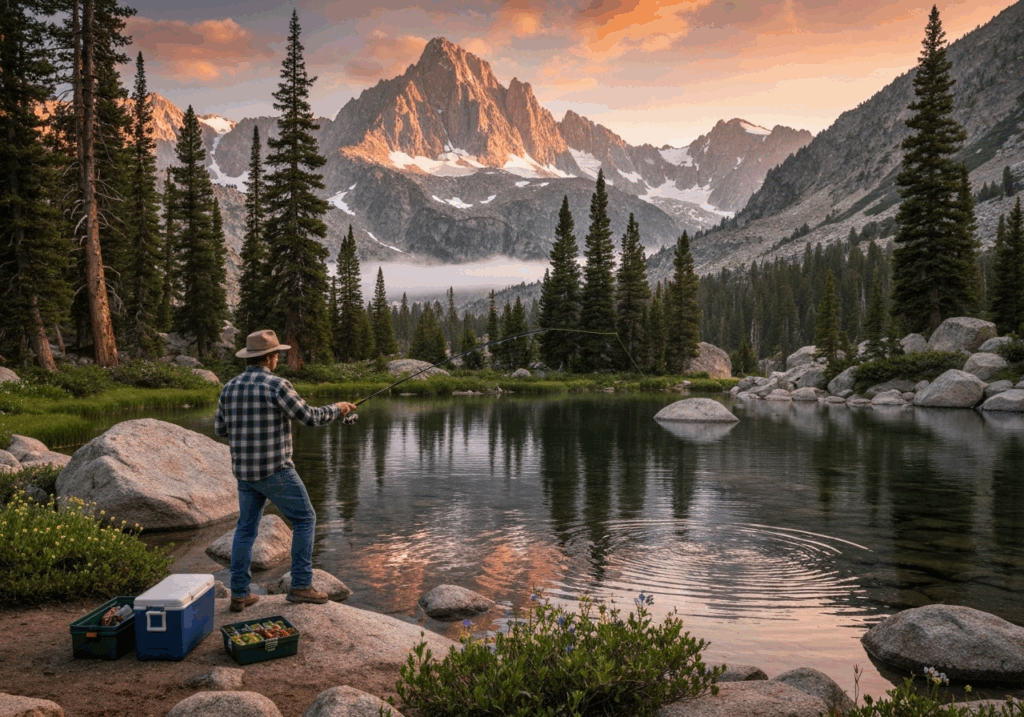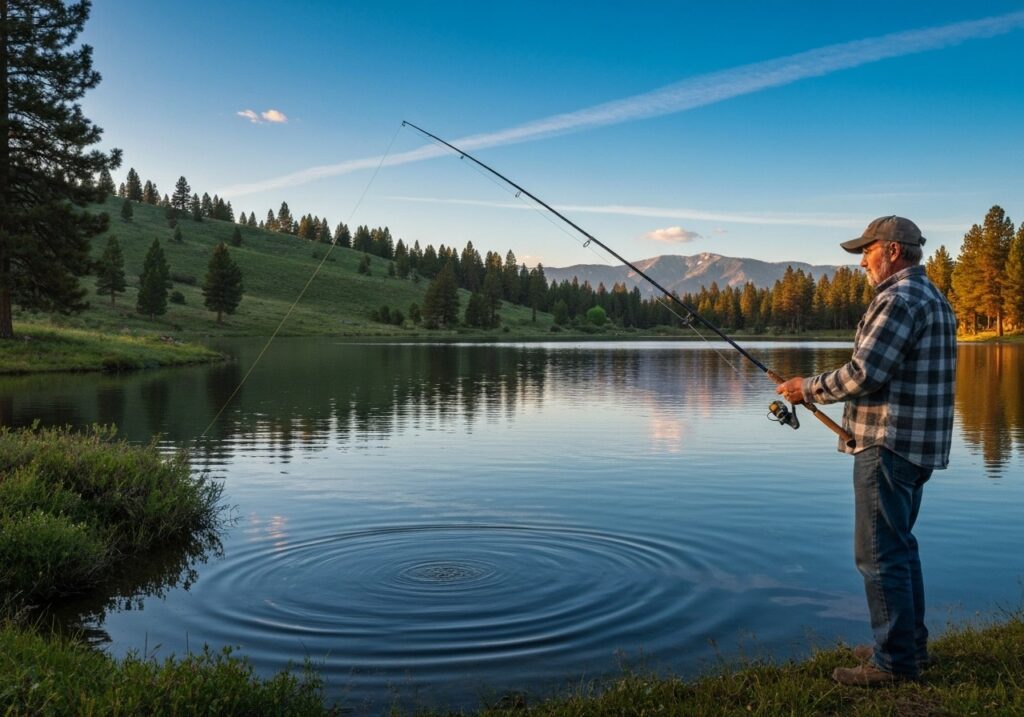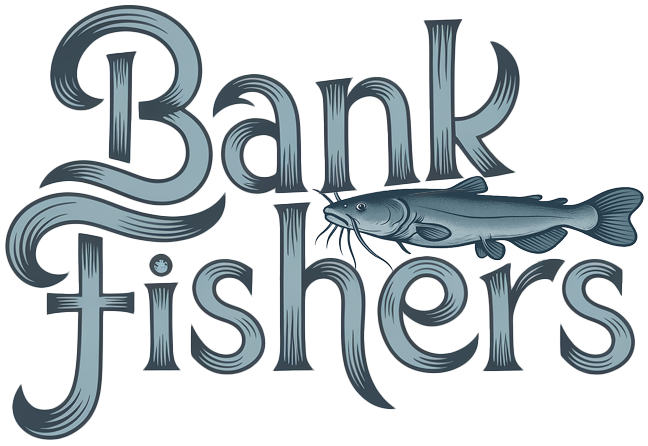
California Fishing License
California, with its stunning coastline, pristine lakes, and abundant rivers, offers a paradise for anglers of all skill levels.
But before you cast your line into its inviting waters, there's one crucial step: securing a California fishing license.
This guide will walk you through everything you need to know about obtaining the right license, understanding regulations, and ensuring your fishing adventures are both enjoyable and compliant with the law.
By understanding the requirements, types of licenses available, and special validations, you'll be well-prepared to explore California's diverse fishing opportunities while contributing to the conservation of its precious aquatic ecosystems.

Understanding California Fishing License Requirements
Who Needs a Fishing License?
In California, generally, anyone 16 years of age or older needs a valid fishing license to take fish, shellfish, reptiles, or amphibians.
This applies to both residents and non-residents, and covers all types of fishing, including freshwater and saltwater.
The funds generated from license sales are crucial for supporting the California Department of Fish and Wildlife's (CDFW) conservation efforts, habitat restoration, and fisheries management programs.
Exceptions to the Rule: When You Don't Need a License
While a fishing license is broadly required, there are a few specific exceptions:
- Public Pier Fishing: In California, you do not need a fishing license to fish from a public pier or from the ocean side of coastal jetties, breakwaters, and docks.
However, all other fishing regulations, such as bag and size limits, still apply. - Sport Fishing Derbies: Some organized sport fishing derbies or events may operate under a special permit that covers participants, but this is less common and usually specific to the event. It's always best to verify with the event organizers.
- Free Fishing Days: The CDFW designates specific "Free Fishing Days" each year, during which Californians can fish without a license.
These days are designed to encourage participation in fishing and introduce new anglers to the sport. All other regulations, such as bag and size limits, remain in effect. - Kids Under 16: As mentioned, individuals under the age of 16 are not required to have a fishing license.
It is important to note that even if you are exempt from needing a license, you are still subject to all other fishing regulations, including bag and possession limits, seasons, and gear restrictions.
Always check the current California Sport Fishing Regulations booklet for the most up-to-date information.
Upholding Conservation: Why Licenses Matter
The requirement for fishing licenses isn't just about revenue; it's a cornerstone of fisheries management and conservation. The funds collected from license sales directly support vital programs that:
- Protect and Restore Habitats: This includes projects to improve water quality, restore spawning grounds, and enhance aquatic ecosystems that fish and other aquatic species rely on.
- Conduct Scientific Research: Funding allows the CDFW to monitor fish populations, study their behavior, and assess the health of aquatic environments, providing the data needed for informed management decisions.
- Enforce Regulations: License fees help fund the enforcement efforts that prevent poaching and ensure sustainable fishing practices, safeguarding fish populations for future generations.
- Operate Fish Hatcheries: Hatcheries play a critical role in supplementing fish populations, particularly for species heavily targeted by anglers or those impacted by environmental factors.
By purchasing a claifornia fishing license, you are actively contributing to the preservation of California's rich aquatic biodiversity and ensuring that fishing opportunities remain abundant for years to come.
It's an investment in the future of one of California's most cherished pastimes.

Types of California Fishing Licenses and How to Get Them
Resident vs. Non-Resident Licenses: What You Need to Know
California offers different fishing licenses depending on your residency status.
Determining whether you are a resident or non-resident is crucial for purchasing the correct license and can significantly impact the cost.
- California Resident: To qualify as a California resident for fishing license purposes, you must be a citizen of the U.S. or a foreign national who has resided continuously in California for six months immediately prior to the date of application for a license. Active military personnel stationed in California are also considered residents.
- Non-Resident: Anyone who does not meet the criteria for a resident is considered a non-resident.
Non-resident licenses are typically more expensive than resident licenses, reflecting the concept that residents, through their taxes and other contributions, already support the state's infrastructure and resources.
Annual, Short-Term, and Lifetime Options
California offers a variety of license validities to suit different fishing needs:
- Annual Licenses: These are the most common type and are valid from January 1st through December 31st of the year for which they are issued, or for 365 days from the date of purchase if purchased after January 1st.
They are ideal for individuals who plan to fish regularly throughout the year. - Short-Term Licenses: For those who only plan to fish for a limited period, California offers short-term options:
- One-Day License: Perfect for a spontaneous fishing trip or for visitors.
- Two-Day License: Provides a bit more flexibility for a weekend outing.
- Ten-Day Non-Resident License: Specifically designed for non-residents wanting to enjoy California's fishing for an extended vacation period.
- Lifetime Licenses: For avid anglers committed to fishing in California for the long haul, lifetime licenses are available.
These are a significant upfront investment but can result in long-term savings and the convenience of never having to renew. They are available for residents only and categorized by age groups (e.g., ages 0-9, 10-21, 22-64, 65+).
Purchasing Your License: Online, In-Person, and By Mail
Getting your California fishing license is convenient, with several purchasing options available:
- Online: The easiest and fastest way to purchase a license is through the California Department of Fish and Wildlife's (CDFW) Automated License Data System (ALDS) website.
You can purchase, print, and even store your license digitally on your mobile device. This option is available 24/7. - In-Person: Licenses can be purchased in person at various CDFW license agents located throughout the state.
These agents include tackle shops, sporting goods stores, and some department stores. You can find a list of authorized license agents on the CDFW website. - By Mail: While less common due to the efficiency of online and in-person options, you can also purchase some licenses by mail. Specific forms and instructions are available on the CDFW website.
- CDFW License Sales Offices: You can also purchase licenses directly from CDFW license sales offices during business hours.
Regardless of how you purchase your license, always ensure you have it in your possession while fishing, whether it's a physical copy or a digital display on your phone, to present to a wildlife officer upon request.
Navigating Special Validations and Regulations
Ocean Enhancement Validation and Other Add-ons
Beyond the basic fishing license, California requires additional validations for specific types of fishing or locations.
These "add-ons" contribute to specialized conservation efforts and management of particular fisheries.
- Ocean Enhancement Validation: This is a crucial validation for anyone fishing in ocean waters south of Point Arguello (Santa Barbara County).
The funds from this validation directly support the Ocean Enhancement Stamp Program, which invests in projects designed to increase the abundance of sport fish in Southern California ocean waters, such as white seabass enhancement and artificial reef construction. If you plan on ocean fishing in this region, this validation is mandatory. - Report Card Requirements: For certain species, like steelhead, sturgeon, abalone (when open), and spiny lobster, a specific report card is required in addition to your fishing license.
These cards are vital for collecting accurate harvest data, which the CDFW uses to monitor populations and make informed management decisions. Anglers are required to fill out and return these cards even if no fish of that species were caught. - Second-Rod Validation: If you wish to use a second fishing rod for purposes other than snagging, you will need to purchase a Second-Rod Validation.
This allows you to fish with two rods simultaneously in inland waters where it is permitted. Note that this validation does not apply to ocean waters, where specific gear restrictions may still be in effect. - Steelhead Report Card: Anyone fishing for steelhead must possess a Steelhead Report Card. This card is critical for tracking catches and understanding the health of steelhead populations, which are often migratory and sensitive to environmental changes.
- Spiny Lobster Report Card: If you are diving or hoop netting for spiny lobster, a Spiny Lobster Report Card is required. This helps monitor the harvest of this popular invertebrate species.
Always check the current California Sport Fishing Regulations booklet or the CDFW website for a complete list of required validations and report cards, as these can change annually.
Freshwater vs. Ocean Fishing: Key Regulatory Differences
The regulations governing freshwater and ocean fishing in California can differ significantly, largely due to the distinct ecosystems and species involved. Understanding these differences is paramount to legal and responsible angling.
Freshwater Regulations (Lakes, Rivers, Streams):
- Species-Specific Rules: Freshwater fishing often has highly specific regulations for different species, such as trout, bass, catfish, and salmon. These may include minimum and maximum size limits, daily bag limits, and possession limits.
- Seasonal Closures: Many freshwater bodies or specific sections of rivers have seasonal closures, particularly to protect spawning fish or sensitive populations. For example, certain trout streams may be closed during spawning seasons.
- Gear Restrictions: There can be restrictions on the type of bait (e.g., artificial lures only, no live bait), hooks (e.g., barbless hooks only), and fishing methods allowed in specific freshwater areas.
- Special Regulations for Wild Trout Waters: Designated "Wild Trout" or "Heritage Trout" waters often have more restrictive regulations to protect native, self-sustaining populations.
Ocean Fishing Regulations (Coastal Waters, Bays, Piers):
- Groundfish Regulations: Ocean fishing is heavily influenced by federal and state groundfish regulations, which govern species like rockfish, lingcod, and cabezon. These often include depth restrictions, daily bag limits, and seasonal closures.
- Pelagic Species: For species like tuna, dorado, and yellowtail, regulations are often tied to federal management plans and may involve size and bag limits.
- California Marine Protected Areas (MPAs): California has an extensive network of Marine Protected Areas where fishing activities are restricted or prohibited. It is crucial to consult MPA maps and regulations before fishing in coastal waters.
- Gear Restrictions: While generally less restrictive than freshwater in some aspects, ocean fishing can still have gear limitations, especially concerning commercial gear types or specific areas.
- Shellfish Regulations: If targeting crab, lobster, or other shellfish, specific seasons, gear (e.g., trap limits), and measuring requirements are in place.
Due to the dynamic nature of fisheries management, it is absolutely essential to consult the most current California Sport Fishing Regulations booklet, available online through the CDFW website, before engaging in either freshwater or ocean fishing.
Staying Informed: Resources for Current Regulations
Fisheries regulations in California are subject to change, often annually or even more frequently in response to scientific assessments and environmental conditions. Staying informed is the angler's responsibility and crucial for legal and ethical fishing. Here are the primary resources:
- California Sport Fishing Regulations Booklet: This is the most comprehensive and authoritative source of information.
It is updated annually and contains all current regulations, including seasons, bag limits, size limits, and special area restrictions for both freshwater and ocean fishing. Physical copies are often available at license agents, while the most current digital version can always be found on the CDFW website. - CDFW Website: The California Department of Fish and Wildlife website (wildlife.ca.gov) is an invaluable resource. Beyond the full regulations booklet, you'll find:
- In-Season Updates: Important notices about emergency closures, regulation changes, or specific advisories.
- Marine Protected Area (MPA) Maps: Interactive maps to help you understand fishing restrictions in different coastal zones.
- Fish Planting Schedules: Information on where and when fish (especially trout) are stocked in various water bodies.
- Contact Information: For regional CDFW offices where you can ask specific questions.
- CDFW Fishing & Hunting Mobile App: The CDFW offers a mobile application that provides convenient access to regulations, license purchasing, and other useful information on your smartphone.
- Local Bait and Tackle Shops: These establishments are often excellent sources of local knowledge regarding current fishing conditions, hot spots, and any recent regulation changes specific to their area.
- Experienced Anglers and Fishing Clubs: Networking with other anglers or joining a local fishing club can provide valuable insights and keep you abreast of local nuances in regulations.
Always make it a habit to check these resources, especially before heading out to a new fishing spot or when a new fishing season begins, to ensure you are fully compliant and contributing to responsible angling.


